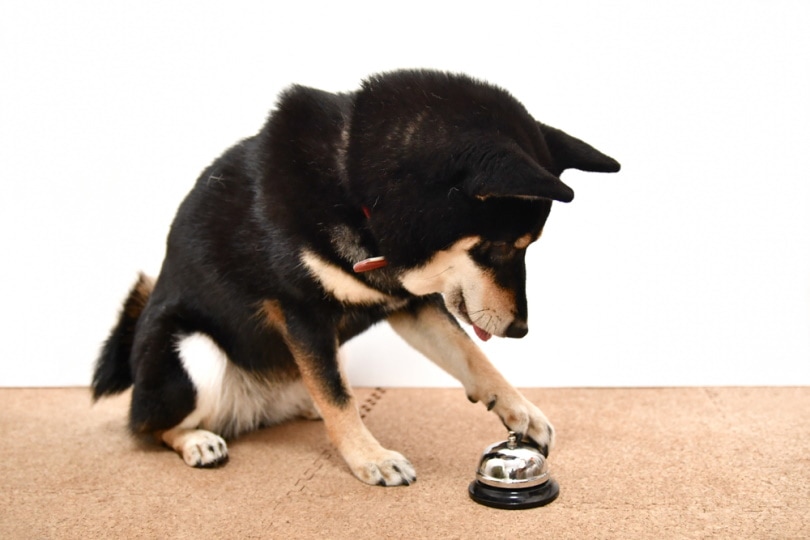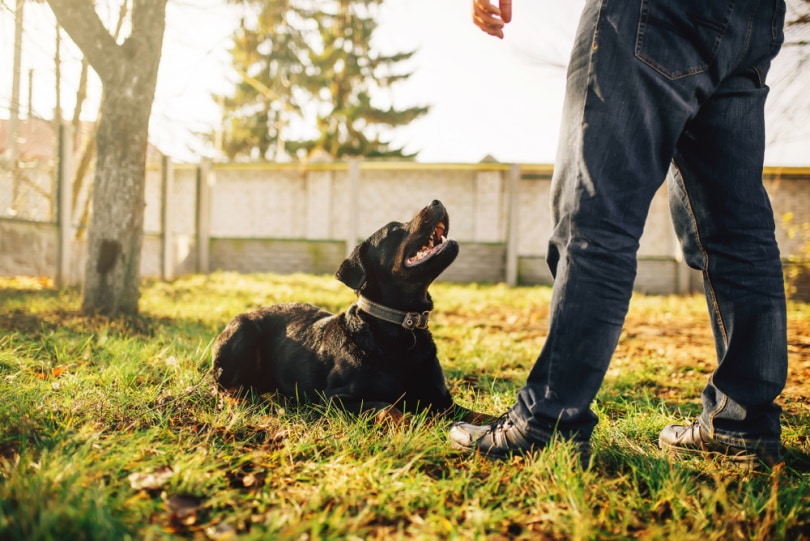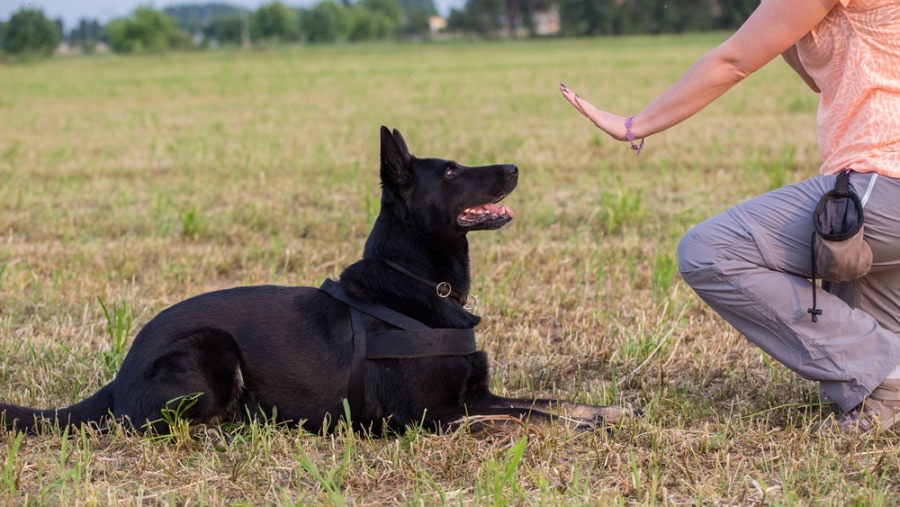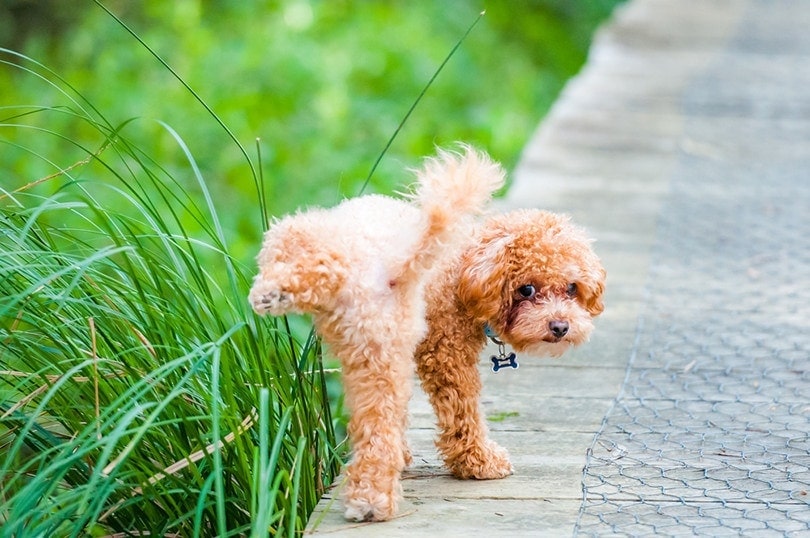How to Teach a Dog to Ring a Bell to Pee in 6 Simple Steps

Updated on

For most owners, it’s easier and more pleasant to have their dog pee outside rather than dealing with pee pads and other messes. But if you’re trying to get on the same page as your dog, potty training can be tricky. Some dogs naturally fall into a schedule of regular pee breaks or find an easy way to communicate their needs without annoying you. But lots will drive you up the wall with their barking or scratching at the door. Or even worse, they’ll just have an accident.
That’s where bell training comes in. Teaching your dog to ring a bell is a great way to let them signal to you when they need to go out—without barking or wall damage. And it’s surprisingly easy to do! Here are six steps to help your dog communicate without trouble.
6 Simple Steps to Teach a Dog to Ring a Bell to Pee
1. Pick the Right Bell
Some dog owners use a big jingle bell on the doorknob as a signal, but this isn’t the best choice. If a bell rings every time you go in and out, it can be hard to teach your dog. The bell might become part of the background noise. Instead, most dog owners prefer an electronic bell with a button your dog can press. This could be as simple as a repurposed doorbell, or you can buy a bell designed for dog ergonomics. If you do want an old-school bell, you’ll want to put it next to the door so that it won’t ring unless you or your dog moves it.
2. Choose the Right Spot to Hang Your Bell
Location is key to bell communication too. The best spot for a bell is on the door under the doorknob or on the doorjamb by where the door opens. Some owners have also had success with a floor bell next to the door. Make sure the bell is in easy reach of your dog’s nose, especially if you’ve got a smaller pup. If your dog already targets a specific spot with his nose or paw when it’s trying to get out, like the doorframe or doorknob, placing the bell there can be helpful.

3. Teach Your Dog to Target the Bell
Some dog owners just start ringing the bell whenever they take the dog out, but most dogs will pick it up more easily if they learn how to ring the bell first and then learn to use it to communicate. Many owners find it easier to start with the bell on the ground. Place the bell on the floor in front of your dog and say “touch.” If your dog noses the bell or shows interest, praise your dog and place a treat on the bell—or right next to it if the bell is too small. Practice 15–25 times a day until it learns to nose the bell on command.
4. Improve Your Dog’s Accuracy If Needed
Some dogs have no trouble getting the bell to ring, but if your bell is a little trickier you can do some targeted training to help. Keep asking your dog to ring on command, but shake up the reward. If your dog touches the right part of the bell, the button, reward with two small treats, and if your dog touches anywhere else only reward with one. Before long, your dog will figure out the best way to get a treat and give you a good ring every time.

5. Connect Ringing the Bell With Going Out
Now that your dog connects the bell with the reward, you can shift the reward from a treat to going out to pee. Hang your bell in your chosen place and wait until a time when you know your dog wants to go out. Then give your dog the command to touch and reward your dog with a treat and going out. You can also give your dog a second treat after peeing to reinforce the connection. Before long, ringing the bell will be a part of your dog’s potty time routine.
6. Eliminate Unnecessary Behavior
Some dogs will pick up right away that the bell is for going out to pee, but others might try to ring the bell more often. Another common problem is that the ringing gets added to behavioral issues like barking instead of replacing them. If your dog rings the bell shortly after coming in or other times when you know it doesn’t need to pee, don’t reward the behavior—say “Not now,” and ignore it. If your dog still barks or scratches at the door, practice telling your dog to calm down and wait until the behavior stops before asking your dog to ring the bell and taking it out.

Last Thoughts
It can take a little time and patience to train a dog properly, but the end result is rewarding. Once your dog gets the hang of bell training, you’ll be able to have quick, easy communication that can eliminate bad behavior and make both of you happier and less stressed. The work is definitely worth it.
Featured Image Credit: dreamnikon, Shutterstock











